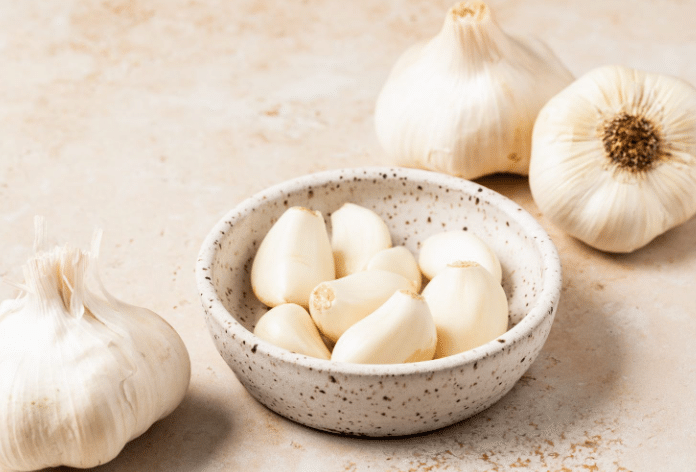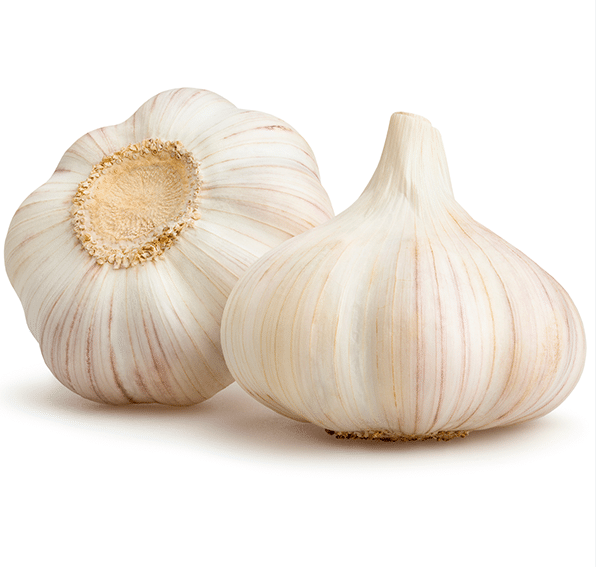For global buyers seeking the pungent perfection of Chinese garlic, understanding the country’s garlic quality standards is paramount. China, renowned as the world’s leading garlic producer, has implemented a robust system to ensure the quality and safety of its garlic exports, safeguarding its reputation in the global market. This guide delves into the intricacies of China garlic quality standards, empowering buyers to make informed sourcing decisions and secure a reliable supply of this culinary essential.
1. National Standards: Setting the Bar for Excellence
China’s commitment to maintaining the high garlic quality of its agricultural exports is evident in its comprehensive national standards for garlic. These standards, developed and enforced by regulatory bodies, cover every stage of the supply chain, from cultivation practices to export procedures, ensuring that Chinese garlic meets stringent quality benchmarks.
- GB/T 1881-2008 (Fresh Garlic): This standard serves as the cornerstone of China’s garlic quality control system. It meticulously defines the garlic quality requirements for fresh garlic bulbs, encompassing parameters such as size (diameter and weight), shape (roundness and uniformity), color (whiteness or specific variety-related hues), moisture content (crucial for shelf life and preventing spoilage), and the presence of defects (bruising, discoloration, disease symptoms).
- GB/T 2740-2015 (Maximum Residue Limits for Pesticides): In line with international food safety regulations, this standard sets strict limits on pesticide residues allowed in garlic. It outlines permissible levels for various pesticides commonly used in garlic cultivation, ensuring that residues do not exceed internationally accepted safety thresholds, protecting consumer health.
- GB/T 2741-2015 (Maximum Limits for Contaminants in Foods): Addressing potential environmental contaminants, this standard sets maximum limits for heavy metals in garlic, including lead, cadmium, and mercury. These heavy metals can accumulate in garlic from soil or water, and excessive levels pose health risks. By enforcing these limits, China ensures that its garlic exports meet stringent safety standards.
2. Industry Certifications: A Mark of garlic Quality and Trust
Beyond adhering to national standards, many Chinese garlic exporters go the extra mile to obtain industry certifications. These certifications serve as independent verifications of their commitment to quality, safety, and, in some cases, sustainability. For discerning buyers, these certifications provide an added layer of assurance.
- HACCP (Hazard Analysis and Critical Control Points): HACCP is a globally recognized food safety management system that focuses on proactively identifying and controlling potential hazards throughout the food production process. Exporters with HACCP certification demonstrate their adherence to rigorous food safety protocols, minimizing risks and ensuring the safety of their garlic products.
- ISO 22000:2018 (Food Safety Management System): This internationally recognized standard provides a comprehensive framework for managing food safety risks across the entire supply chain. Chinese garlic exporters who have achieved ISO 22000 certification demonstrate their commitment to implementing robust food safety management systems, covering everything from hygiene and sanitation to traceability and documentation.
- Organic Certification: As consumer demand for organic produce continues to rise, many Chinese garlic producers have embraced organic farming practices. Exporters who offer certified organic garlic must adhere to strict regulations, ensuring that their garlic is grown without the use of synthetic pesticides, herbicides, or fertilizers. Organic certification provides assurance to buyers seeking garlic produced using environmentally sustainable methods.

3. Quality Inspection: Ensuring Compliance at Every Step
China’s commitment to garlic quality extends beyond setting standards and certifications. The country has implemented a rigorous inspection system to enforce these standards throughout the supply chain, ensuring that only garlic that meets the highest garlic quality and safety benchmarks reaches the global market.
- Pre-harvest Inspection: Before garlic bulbs are even harvested, inspectors visit farms to assess the health and quality of the crops. They check for signs of disease, pests, or any other factors that could compromise the quality of the garlic. This early intervention helps prevent the harvesting of substandard garlic.
- Post-harvest Inspection: Once harvested, garlic bulbs are transported to processing facilities, where they undergo a thorough inspection process. Trained inspectors examine the bulbs individually, checking for size, shape, color, and the presence of any defects, such as bruising, discoloration, or physical damage. This meticulous sorting process ensures that only high-quality garlic proceeds to the next stage.
- Processing Plant Inspection: The facilities where garlic is processed, packaged, and stored are also subject to regular inspections. Inspectors verify that these facilities maintain the highest standards of hygiene and sanitation, adhering to strict food safety protocols. They also check that processing equipment is properly maintained and calibrated, ensuring the integrity and garlic quality of the final product.
- Pre-shipment Inspection: Before a shipment of garlic is cleared for export, it undergoes a final pre-shipment inspection. This comprehensive inspection serves as the last checkpoint to verify that the garlic meets all garlic quality and safety requirements. Inspectors check the quality of the garlic itself, as well as the packaging, labeling, and shipping documentation, ensuring that everything is in order.
4. Key Quality Parameters: A Buyer’s Checklist
Navigating the world of Chinese garlic can seem daunting, but armed with the right knowledge, buyers can confidently source high-quality garlic that meets their specific needs. Here’s a checklist of key quality parameters to consider:
- Variety: China boasts a diverse range of garlic varieties, each with its unique flavor profile, appearance, and culinary applications. Clearly specify the desired variety (e.g., Purple Stripe, known for its robust flavor; White Garlic, prized for its versatility; Solo Garlic, valued for its mildness and ease of peeling) to ensure you receive garlic that aligns with your intended use.
- Size and Shape: Garlic bulbs are typically graded and sorted based on size and shape, allowing buyers to select garlic that meets their specific requirements. Size is often expressed in centimeters, referring to the diameter of the bulb (e.g., 4.5 cm, 5.0 cm, 5.5 cm), while shape refers to the overall form of the bulb (e.g., round, oval). Uniformity in size and shape is often desirable for aesthetic purposes and ease of processing.
- Color: The color of garlic cloves can vary depending on the variety, but in general, the cloves should be uniform in color, free from discoloration, blemishes, or signs of mold. White Garlic, as its name suggests, should have bright white cloves, while Purple Stripe garlic will have cloves with distinctive purple stripes. Any unusual discoloration could indicate quality issues.
- Moisture Content: Proper drying is essential for preserving garlic and preventing spoilage. Garlic with excessive moisture content is prone to rotting and has a shorter shelf life. The ideal moisture content for garlic is below 18%. Buyers can request moisture content readings from suppliers or include this parameter in their quality specifications.
- Purity: High-quality garlic should be free from foreign matter, such as dirt, stems, loose skins, or other debris. The presence of foreign matter not only affects the aesthetic appeal but also indicates potential issues with processing and handling.
- Aroma and Flavor: Perhaps the most crucial aspect of garlic quality is its aroma and flavor. High-quality garlic has a strong, pungent aroma that is characteristic of this beloved bulb. The flavor should be sharp and piquant, without any unpleasant bitterness or off-flavors.
5. Tips for Ensuring Quality: A Proactive Approach
Sourcing garlic from China requires a proactive approach to quality assurance. By taking the following steps, buyers can minimize risks and establish a reliable supply of high-quality garlic:
- Partner with Reputable Suppliers: The foundation of successful sourcing lies in choosing the right supplier. Thoroughly vet potential suppliers, looking for those with a proven track record of quality and compliance. Seek out suppliers who are transparent about their operations, have established quality management systems, and are willing to provide documentation and answer questions.
- Request Certifications and Inspection Reports: Don’t hesitate to request copies of relevant certifications, such as HACCP, ISO 22000, and organic certifications, from potential suppliers. These certifications provide independent verification of their commitment to quality and safety. Additionally, ask for copies of recent inspection reports to gain insights into their track record.
- Consider Third-Party Inspection: For high-value orders or when working with a new supplier, engaging an independent third-party inspection company can provide an extra layer of assurance. These companies can conduct inspections at various stages, from pre-shipment to destination port, verifying quality, quantity, and compliance with your specifications.
- Clear Communication: Establishing clear and open communication with your supplier is paramount. Clearly communicate your quality requirements, specifications, and expectations from the outset. Provide detailed product specifications, including acceptable ranges for key parameters like size, color, and moisture content.
- Sample Orders: Before committing to a large order, always request sample orders from potential suppliers. This allows you to assess the quality of their garlic firsthand, verifying that it meets your standards and aligns with your intended use. Sample orders are an invaluable tool for mitigating risks and making informed sourcing decisions.
Frequently Asked Questions: China Garlic Quality
1. What are the primary risks of not understanding Chinese garlic quality standards?
Sourcing garlic without a firm grasp of China’s garlic quality standards is akin to navigating a maze blindfolded. You risk receiving shipments with inconsistent sizes, colors, and flavors, potentially disrupting your production processes or disappointing your customers. More critically, you could encounter food safety issues (e.g., excessive pesticide residues), leading to regulatory non-compliance, costly shipment delays or rejections at customs, and, most importantly, damage to your brand’s reputation and consumer trust.
2. How can I verify the authenticity of a supplier’s certifications?
Don’t just take a supplier’s word for their certifications. Request copies of the certificates directly from the issuing certification body. Most reputable certifiers have online databases where you can cross-reference a supplier’s name or registration number to confirm the validity and scope of their certifications.
3. Is it possible to visit garlic farms or processing facilities in China?
While not always logistically or financially viable, arranging on-site visits with potential suppliers can be immensely beneficial. Seeing their operations firsthand—from the fields to the packing lines—allows you to assess their commitment to hygiene, quality control, and ethical labor practices. If a visit isn’t possible, request detailed photos or videos of their facilities and processes.
4. What are some common signs of low-quality garlic to watch out for?
When inspecting garlic, trust your senses. Reject garlic with a musty, moldy, or fermented smell, as this indicates spoilage. Look for firm, plump cloves with a consistent color. Soft, shriveled, or discolored cloves signify poor quality or improper storage. Avoid garlic with excessive bruising, sprouting, or visible signs of pests. And remember, high-quality garlic should have a strong, pungent aroma—a telltale sign of its freshness and flavor.
5. How can I stay updated on changes to China’s garlic quality standards?
The world of agricultural regulations is constantly evolving. To stay ahead of the curve, subscribe to industry newsletters, follow relevant trade organizations and government agencies (e.g., the General Administration of Customs of China), and maintain open communication with your suppliers or import agents. They can alert you to any updates, revisions, or new regulations that might impact your sourcing operations.

More information about Chinese garlic is available at:
- Chinese Garlic Wholesalers: Your Best Choice Now
- China Garlic Exports: Astonishing Growth and Future Trends
- China Garlic Production: Astonishing 75% Share of the World’s Garlic Market
- Chinese Garlic Varieties: Discover 7 best and Flavorful Types
- China Garlic Excellence: 7 Essential Storage Strategies
